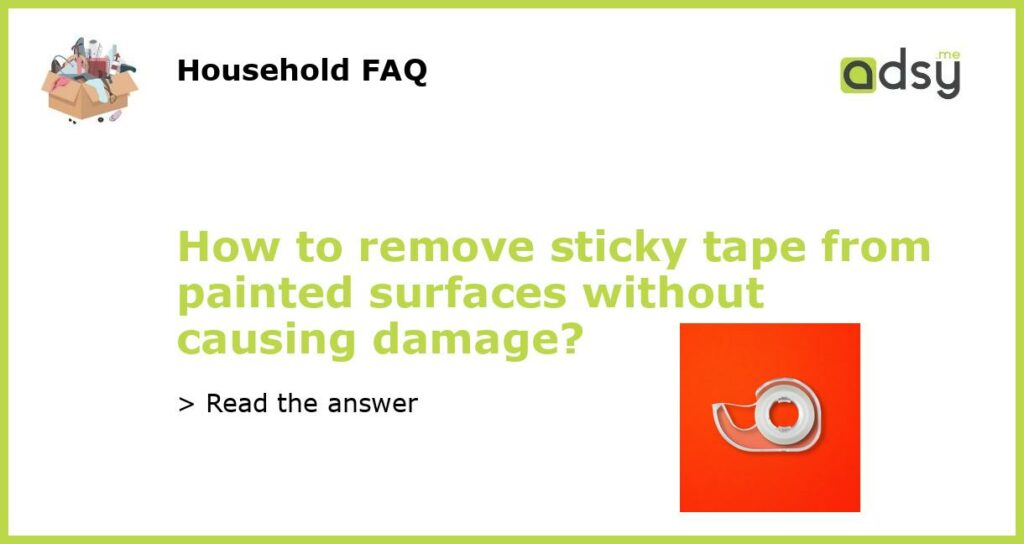Understanding the challenge of removing sticky tape from painted surfaces
Sticky tape can be a convenient tool for various purposes, from hanging decorations to temporarily fixing items. However, its removal can often leave sticky residue on painted surfaces, causing frustration and potential damage. Whether you’re a homeowner or a renter, it’s important to know how to remove sticky tape properly without causing any harm to the paint beneath. Let’s explore some effective methods that can help you tackle this challenge.
Using heat to remove sticky tape residue
Heat can be a powerful ally when it comes to removing sticky tape residue from painted surfaces. Start by warming the adhesive with a hairdryer on a low heat setting. Gently heat the tape for a few seconds, ensuring you maintain a safe distance to prevent any overheating. Once the adhesive is warm, use a plastic scraper or an old credit card to gently lift the softened tape. Be patient during this process and avoid using excessive force to prevent any damage to the paint. If any residue remains, repeat the process until the surface is clean.
Utilizing natural remedies
If you prefer using natural remedies, there are several household items that can effectively remove sticky tape residue. One such ingredient is vinegar. Dampen a cloth or sponge with vinegar and gently apply it to the affected area. Allow the vinegar to sit for a few minutes to loosen the adhesive. Then, use a plastic scraper or your fingers to remove the tape residue. Another natural option is using cooking oil or olive oil. Apply a small amount of oil to a cloth and rub it onto the sticky residue. Allow the oil to penetrate the adhesive for a few minutes before wiping it away with a clean cloth.
Trying commercial adhesive removers
If the sticky tape residue proves stubborn and the aforementioned methods haven’t worked, you can try using commercial adhesive removers. There are various products available in the market specifically designed to tackle sticky residue without causing damage to painted surfaces. These removers often come in a liquid or gel form and work by breaking down the adhesive. Follow the instructions provided by the manufacturer and test the product on a small, inconspicuous area before applying it to the entire affected surface. This will help ensure that the remover doesn’t cause any unwanted side effects, such as discoloration or paint damage.
Preventing damage during the removal process
When attempting to remove sticky tape from painted surfaces, it’s crucial to take certain precautions to prevent any damage. Here are a few tips to keep in mind:
- Always start with the gentlest method first, such as using heat or natural remedies, before turning to stronger options.
- Be patient and avoid rushing the process. Applying excessive force or using sharp tools can scratch the paint.
- If using a scraper or credit card, make sure to choose a non-metallic one to prevent any scratching or gouging.
- Test any adhesive removers on a small, inconspicuous area before proceeding with the full application.
- Once the residue is removed, clean the surface with mild soap and water to remove any remaining adhesive or residue.
By following these guidelines and using the appropriate methods, you can safely remove sticky tape from painted surfaces without causing any damage or leaving behind unsightly residue. Remember to prioritize caution and take your time to ensure the best possible outcome for your painted surfaces.






